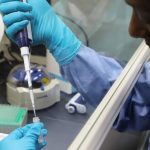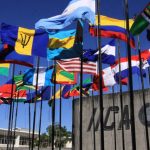Five Ways That COVID-19 Has Changed What Food Insecurity Looks Like In The Caribbean

(Forbes) Caribbean countries are familiar with the risk that comes with a lack of food sovereignty. It has long been the case that between 80 and 90 per cent of all food consumed in the region (in the amount of about $6 billion according to the latest numbers) originates from foreign countries, creating greater uncertainty between the months of June to November when there is an elevated risk of hurricanes.
The Agriculture Ministers & other stakeholders met in a special session of the COTED on Thursday via videoconference to consider https://t.co/lkrEgAqBP4 the impact the pandemic was likely to have on food & nutrition security in the Region.
— Caribbean Community (CARICOM) (@CARICOMorg) March 24, 2020
With COVID-19 the paradigm has shifted. The region is not looking at a national or regional crisis— it is faced with most far reaching global crisis in history, and unlike a natural disaster that has the potential to shut down the cargo ports of one or more Caribbean countries, the region is likely to face reduced and interrupted supplies from its primary source of food— the United States.
Here are five reasons why the lens through which we have typically looked at food insecurity in the Caribbean has changed.
The primary source of foreign exchange has temporarily dried up
Travel & Tourism is a key economic driver and foreign exchange earner in the Caribbean. In Jamaica alone, the sector accounts for 58 per cent of all foreign exchange earnings. Caribbean Economist and Advisor, Marla Dukharan predicts that in a COVID-19 worst-case scenario, the Caribbean region could lose up to 83 per cent of its tourism earnings on average— which would hurt reserves and significantly impact those countries with a high agricultural trade deficit.
Read more at: Forbes
Source: CARICOM TODAY

 Previous Post
Previous Post Next Post
Next Post